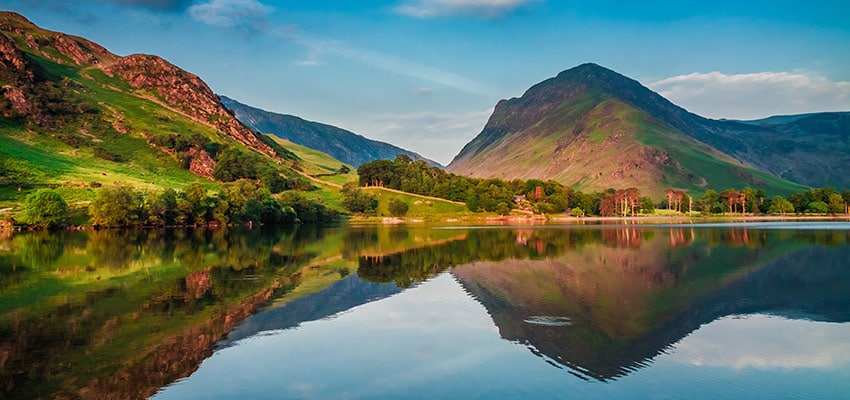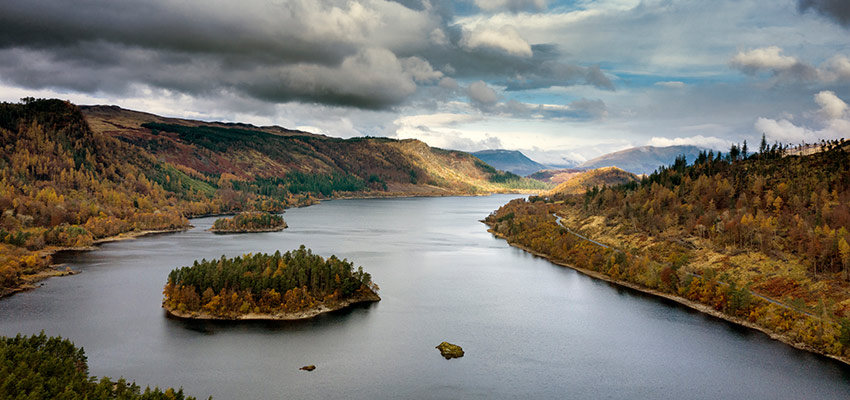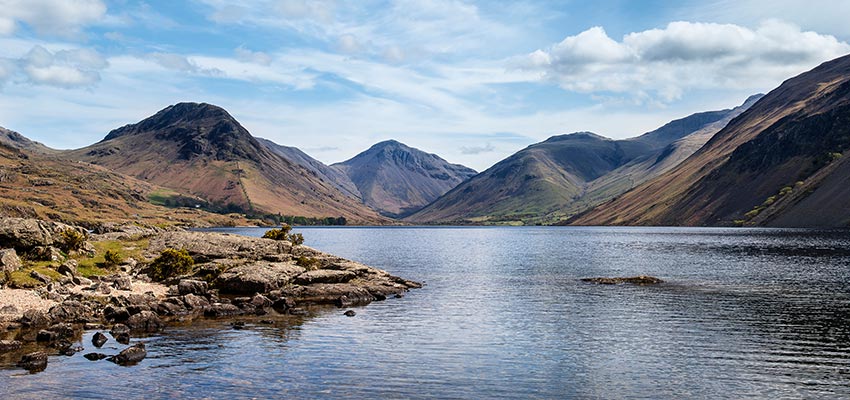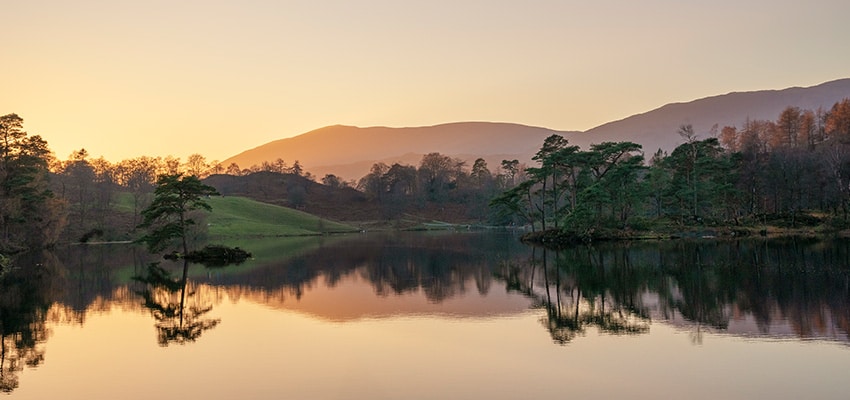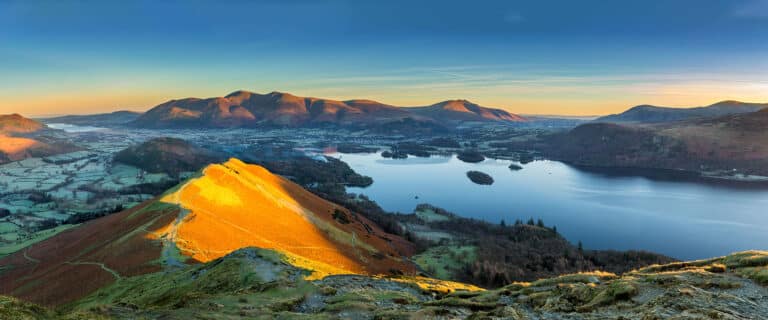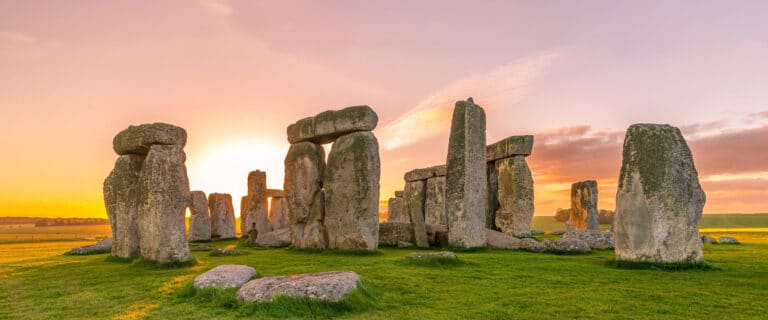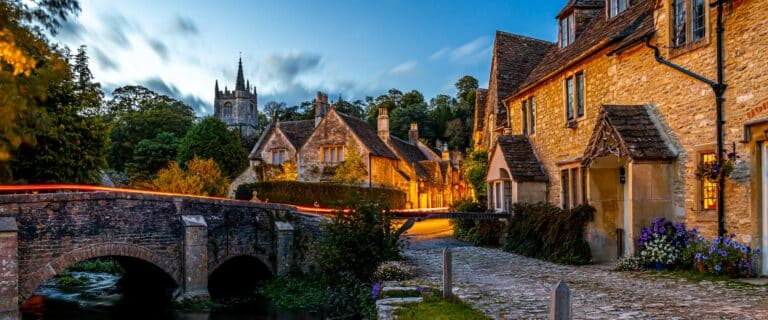When in England, visit the Lake District; its natural beauty was celebrated in 2017 when it became a UNESCO World Heritage Site. The poetry of the Romantic period was influenced by the natural lakes and their surroundings. Poets from this time, including William Wordsworth, Samuel Taylor Coleridge, and John Ruskin were inspired by the lush environment of water, forests, and fells. Wordsworth’s book, Guide through the District of the Lakes, was the beginning of tourism to the area—he is often considered the quintessential Lake District poet.
Wordsworth
Wordsworth’s evocative words capture the essence of the lakes. He said of the fells “in the combinations which they make…and in the beauty and variety of their surfaces and colors, they are surpassed by none.” Born in Cockermouth, he spent his formative years surrounded by the Lake District’s beauty—his name is still carved into a desk at Hawkshead Grammar School. Wordsworth wrote many well-loved poems in his Lakeland homes of Dove Cottage and Rydal Mount.
Located between Ambleside and Grasmere, Rydal Mount gave the poet remarkable views over Lake Windermere, Rydal Water, and the surroundings. However, the most likely setting for his poem “Daffodils” is probably the area between Patterdale and Gowbarrow, by Ullswater.
Ruskin
By contrast, John Ruskin was not only a poet of the Romantic Movement, he was a polymath with works as diverse as his Poems and the five-volume critique Modern Painters. Though born amid the crowds of London, Ruskin was profoundly affected by his childhood days spent in the Lake District.
His love of the natural world continued into adulthood, and it also influenced his architecture. (As well as his belief in conservation and green space.) These all strongly influenced artists of the Pre-Raphaelite movement, including William Morris.
The Lake District remained important to Ruskin throughout his life. Heading into old age, he bought Brantwood, a house close to Coniston Water. Today it’s a museum with his personal effects.
Coleridge
Like Ruskin, Samuel Taylor Coleridge was a polymath, although he is best remembered for his poetry. Along with his friend Wordsworth, he coined the phrase “suspension of disbelief.” Coleridge’s most famous works are The Rime of the Ancient Mariner and Kubla Khan, both composed in a single night.
In 1800, Coleridge settled with his family in Keswick, close to Wordsworth’s Dove Cottage. He took several walking holidays in the area, developing a sense of geography that can be felt throughout his verse. Coleridge is also credited with the first recorded descent of Scafell, England’s second highest mountain, via the Broad Strand route. He had simply lost his way.
Beatrix Potter
Born at the end of the Romantic era, the beloved children’s author, Beatrix Potter, was heavily influenced by the Lake District. Her illustrated tales of Peter Rabbit, Jemima Puddle-Duck, Mrs. Tiggy-Winkle, and their friends, were born out of family holidays in the lakes.
Potter developed a long-lasting affection for the natural environment—this leaps off the pages of her work. (Squirrel Nutkin goes sailing on Derwentwater, and the village of Hawkshead appears in The Tale of Johnny Town-mouse.)
The profits from her books allowed Potter to move to the Lake District, buying Hill Top Farm. It’s now maintained as a legacy museum. A gallery in Hawkshead displays original artworks from her tales, and The Lake District Visitor Centre at Brockhole was the former home of Potter’s cousin. Taking a trail from Brockhole is to learn more about the natural world she loved.
Ransome
Most of Arthur Ransome’s children’s stories are set within the Lake District. Tales of children sailing the lakes and camping on its islands encompass the essential spirit of the Lake District.
Ransome learned to sail on Coniston Water, attended a school in Windermere, and then moved to Haverthwaite. It was there he wrote most of his books. The fictional Cormorant Island was inspired by Silver Holme Island on Windermere, and he combined the geography of both Windermere and Coniston Water to create the imaginary lake in his books.
The stunning Lake District has inspired writers for more than two centuries. The landscape that influenced them remains largely unchanged; visitors can step into the imaginations of these writers and look at the land from their point of view. Every view is an experience.
Let your Destination Expert know that you would welcome inspiration in the countryside on your England vacation!


